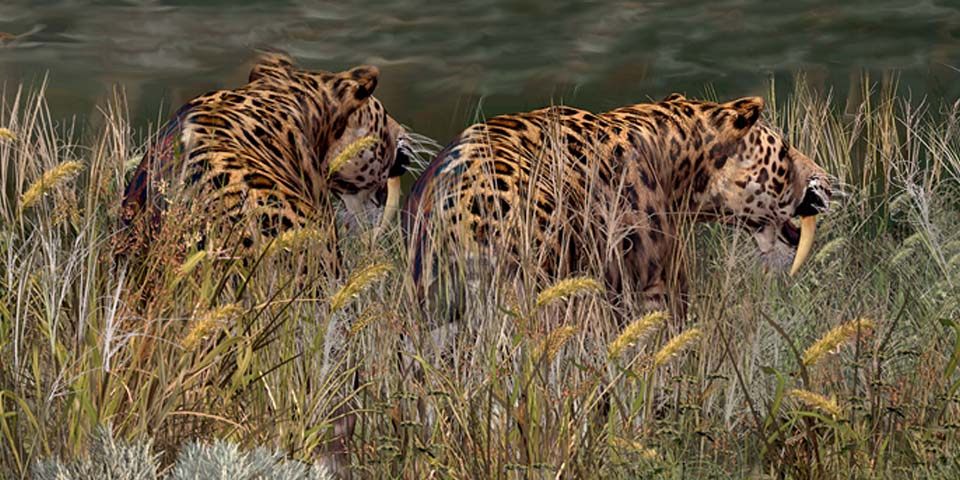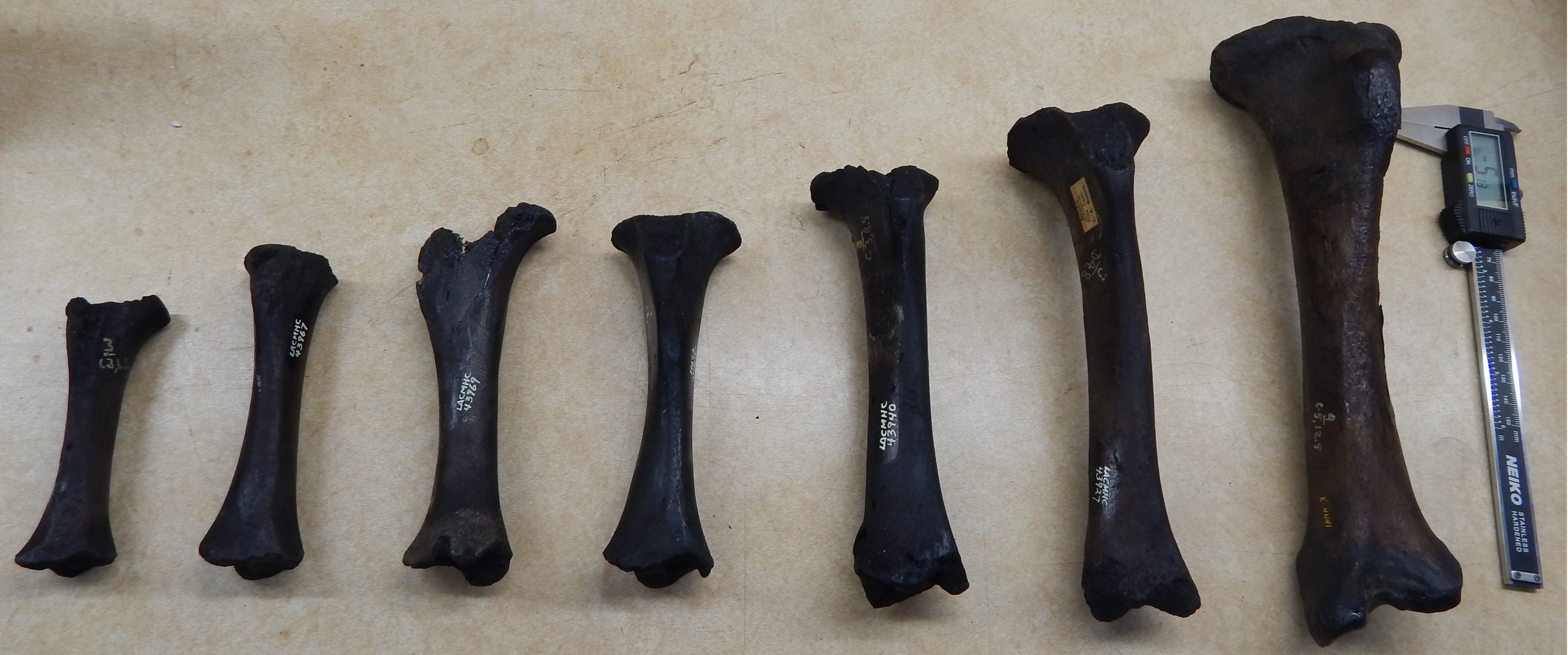Saber-Toothed Kittens Were Really, Really Strong
A new study sheds light on how these extinct felines attacked.

The apparent pun in Smilodon, the scientific genus of the saber-toothed cat, seems to be an accident. The largest assemblage of fossils of these prehistoric carnivores comes from the La Brea Tar Pits in Los Angeles, where they lived up until about 11,000 years ago. Weighing between 100 and 620 pounds, depending on the species, they had exceptionally long canine teeth, specially designed for precision killing. A new study, published in PLOS ONE, reveals more about these mammals and how they killed their prey. Limb bones found in the tar pits suggest that, even as kittens, Smilodon was very strong and robust. These kittens had big teeth—and muscles to match.
A team of scientists from the California State Polytechnic University of Pomona analyzed these fossils to see how the kittens changed as they aged. The La Brea Tar Pits have provided a wealth of samples, and some 90 percent of all fossils found there come from carnivores, who came to the pits looking for easy, captive prey. Sometimes they got a meal, other times they themselves got stuck in the thick petroleum goop.

Unlike modern big cats, which start as vulnerable kittens and get much stronger as they age, saber-toothed kittens had husky, muscular forelimbs, based on the the bone density of the samples. This would have allowed them to attack prey even from a very young age. What’s more, the hardiness of these bones tells us that Smilodon likely didn’t like to run very fast—or at least that they were more likely to kill their prey by ambush rather than by chasing it down. Smilodon favored big beasts—elephants, rhinos, and other massive herbivores no longer alive today. Compared to other predators or cats of similar size, they were far stronger and heavier. This carnivore, the study says, “used their powerful forelimbs to quickly wrestle prey to the ground and pin it before slashing its vulnerable throat or belly with their saber-like canines.” Grim, but effective.
Wiped out in the last Ice Age, Smilodon has left us no direct descendants. Of the big cats around today, which come from a different lineage, leopards, cheetahs, and lions are more likely to chase their prey, while cougars are typically ambush predators. They might wait on ledges or in trees before leaping onto the their prey and delivering a suffocating neck bite. Smilodon’s practices, it seems, were not dissimilar.





















Follow us on Twitter to get the latest on the world's hidden wonders.
Like us on Facebook to get the latest on the world's hidden wonders.
Follow us on Twitter Like us on Facebook